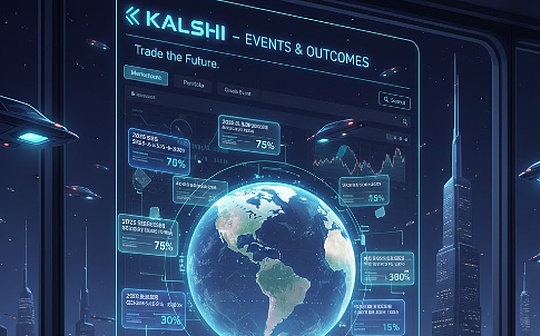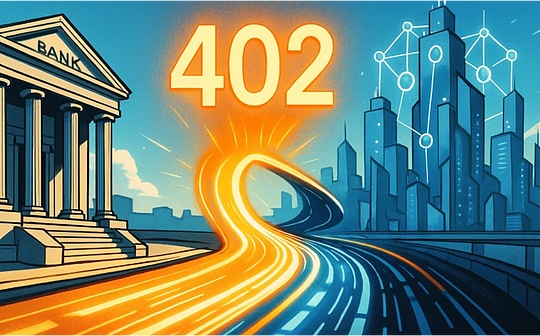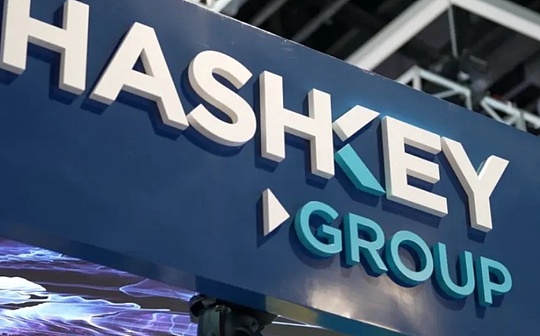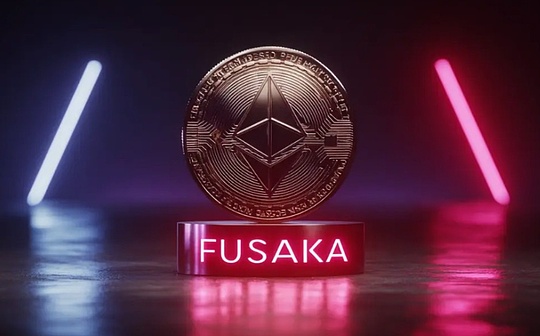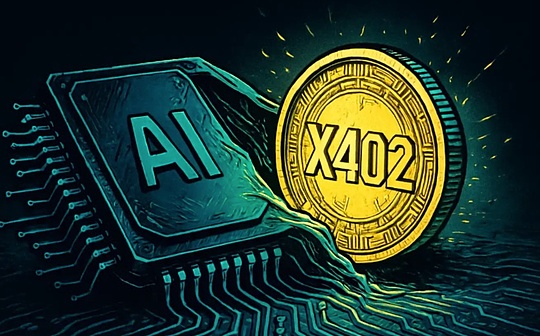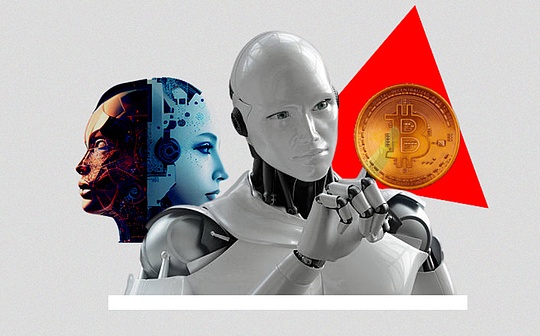
Author: darshan gandhi, Futurex Labs founder Source: ModularMedia Translation: Shan Ouba, Bit Chain Vision World World
Foreword
The integration of cryptocurrencies and AI ecosystems is rapidly developing, and many companies are developing innovative solutions to respond to various challenges in the industry.These efforts cover vertical fields such as data availability, coordination of networks, computing providers, and model providers, which basically cover the entire artificial intelligence stack.
In the past year, the field has received strong support from the leaders, builders and innovators in this field.This support has greatly promoted the progress and popularity of the encrypted X AI ecosystem.
In this report, we aim to study the ecosystem in depth and comprehensively understand its components.We will cover the following parts:
-
Crypto X AI Ecosystem 101
-
Deepen inquiry category
-
What will the future of Crypto X AI look like?
-
Conclusion
-
calculate
-
AI Smart
-
Data usability
-
game
-
Privacy, ZKML, FHE
-
consumer
-
Coordinate the network
-
Associate processor
-
Model training
-
Model founder
-
Hyperbolic
Hyperbolic combined with global computing, providing accessible, economically affordable and scalable GPU resources and AI services.They provide GPU access at the lowest market price, including A100 and H100, and allow users to monetize idle machines.Hyperbolic provides services to companies, researchers, data centers, and individuals, providing high throughput, low -delayed AI reasoning services and scalable GPU access, and providing packages for use.
-
Akash network
Akash allows users to buy and sell computing resources safely and efficiently.The point -to -point communication model that does not require permits focuses on data privacy and payment transparency, making it a flexible, secure, safe and efficient alternative of traditional cloud services.They claim that they are nearly 5 times cheaper than web2.Users can explore extensive cloud resources and real -time network pricing, make money by providing hardware on the Internet to become providers, and use the user -friendly Akash console to deploy.Akash is common to provide cloud computing services for anyone.
-
AETHIR
AETHIR provides safe, economical and efficient enterprise GPU access worldwide.AETHIR has more than $ 400 million computing power, focusing on achieving high performance and reliability.They provide two major products:
GPU providers can easily expand and earn considerable income and exclusive rewards.AETHIR pays great attention to games and AI.
-
AETHIR EARTH:Provide the original GPU computing power for AI model training and reasoning.
-
AETHIR ATMOSPHERE:Support low delayed cloud games.
-
Render network
Render Network provides decentralized GPU rendering, which aims to provide nearly infinite GPU computing power for 3D content creation.Founded in 2017, the company is one of the oldest participants in the market. It focuses on allowing creators and artists to focus on content creation without worrying about calculation requirements and functions.It is a GPU provider, while Akash pays more attention to community -driven.
-
IO.NET
IO.NET is a aggregation provider focusing on GPU resources around the world, which aims to provide access to access, economical affordable and scalable computing solutions.Users can monetize the idle GPU and obtain income through high utilization rates.IO.NET emphasizes strong security through SOC2/HIPAA compliance and end -to -end encryption.They cooperate with other computing providers such as AETHIR and Render to gather computing services provided by these partners.
-
Talus network
Talus Network is a 1 -layer blockchain, which combines the security and performance of the MOVE smart contract to create a powerful ecosystem for AI Smart.These intelligences can be used for various applications, such as DEFI for monetized intelligence, intention networks for the best user results, automatic game resource collection, and DAO governance.The core principle of TALUS is the experience of security, speed and enhanced developer, so that it can create a safe and high -performance AI application.This ensures that the intelligent agent in TALUS can safely and transparently owns, manage and monetize.
-
Guru network
Guru Network is a 3 -layer blockchain that is building a multi -chain AI computing layer that allows DAPP and retail users to embed the carefully arranged AI intelligence in their daily work and get rewards.Guru Network’s Flow Orchestrator acts as infrastructure, as the service (IaaS), so that the AI model and processor can be published and integrated into the application.The network supports independent agents and computing nodes to create a market for these services.Guru Network focuses on interoperability and scalability, and aims to integrate AI -driven arrangements to the chain and underneath activities.
-
Myshell
MyShell is developing an AI consumer layer connecting users, creators and open source AI researchers.The platform allows users to build, share, and owns AI intelligence to achieve voice and video interaction through AI partners such as Shizuku.Using the most advanced generation AI model, myshell can quickly convert creativity into AI native applications, allowing anyone to become creators, owning their own works, and get rewards for their contributions.
-
Celestia
Celestia is the first modular blockchain network to provide scalable and efficient data availability solutions for DAPP.By separating the consensus layer and data availability layer, CELESTIA enables developers to easily deploy customized blockchain as well as the deployment of smart contracts.Its modular architecture supports sufficient throughput through data availability sampling (DAS). The sampling is expandable while maintaining any user’s verification.
-
Eigen da
EIGEN DA is based on Eigenlayer and can store Rollup transactions until its state is finally determined on the Rollup Bridge.Its scalability, security and decentralization make it an ideal choice for developers who need reliability and data.EIGEN DA’s core components include operators, dispersers, and retrievals. They work together to store and verify data with efficiently.
-
0G Labs
0G LABS provides unlimited extended data availability and storage system to expand Web3 and achieve novel chain use cases.The programmatic data availability infrastructure promotes scalable and secure applications through low delayed data feedback.0G storage network provides flexible data storage systems for structural or non -structured data, supporting applications, network status uninstallation, etc.This flexibility enables developers to customize data pipelines, build AI applications on the chain, and use OPML or ZKML to perform decentralized reasoning or fine -tuning.
-
Nuff Tech (Nearly DA derivative products)
Nuffle Labs has two main products:
-
Near DA uses the fragment architecture of the Near protocol to provide the modular data availability layer to ensure high throughput and low cost.
-
Nuffle Fast Finals (NFFL) use Eigenlayer to provide a fast settlement layer to achieve fast information access to the network.
-
Nim network
NIM Network is a Dymension Rollapp, which focuses on the intersection of web3 games and AI.It uses Dymension modular framework to provide compatibility with the COSMOS ecosystem and EVM chain to ensure flexibility and scalability.The AI agent on NIM Network acts as an intermediary between users and blockchain applications, simplifying interaction and enhancing user experience.The cooperation with platforms such as Jokerace and Ocean Protocol, and joining the AI game alliance, highlights NIM Network’s commitment to AI game innovation and scalability.
-
Today the game
Today, this game will allow players to create their dream islands and establish relations with artificial intelligence residents.See what they will build and it will be very interesting
-
Ai Arena
AI Arena is an action game, which is the AI character learning behavior mode and participates in the battle.Players train their AI characters, affect their strategies and observe their performance in battle, and create an immersive fusion of AI and games.
-
Colony
Colony is a web3 survival simulation game driven by artificial intelligence. It has a highly autonomous artificial intelligence agent called “incarnation”. They continue to learn from the surrounding world.Players guide and cooperate with these artificial intelligence with extensive skills and capabilities to navigate on the future earth. This earth lives different colonies, and they compete for survival.Colony’s artificial intelligence has a unique personality and worldview, and learns personal experience lessons and insights from their experience.In addition, these incarnations can be traded on the chain through their dedicated wallets that they control, enabling them to translate with other games.
-
Playai
Playai is a modular chain designed for the game AI. It enables creators to deploy complex game AI, allow players to make money through games and help the game improve the overall user experience.Playai summarizes game data from the game community. It processs it through a data node to create a model data set and ensure that the data quality of the training AI model is the highest.
-
Fhenix
Fhenix promotes the deployment of encrypted smart contracts to ensure the security and privacy of sensitive data.The roadmap of this project includes multiple stages, such as the launch of the Helium Testnet, Nitrogen Testnet V2 and Gold main network.
-
Inco network
Inco Network competes with Fhenix, focusing on building a modular and privacy -protection machine learning ecosystem.By integrating privacy protection methods, Inco Network can ensure the security processing of sensitive data in machine learning applications, thereby reducing risks related to data leakage and unauthorized access.
-
Giza
GIZA uses zero -knowledge proof to ensure data security and private.Their goal is to simplify the process of constructing, management and hosting the verification machine learning model, so that developers can create a trusted AI solution
They provide:
They recently announced their launch of their AI agent support framework.
-
Python supports workflow, which is convenient for integration
-
Create operational SDK -based SDK -based SDK in a privacy priority manner
-
Modulus Labs
Modulus Labs focuses on developing operating AI solutions.By using zero -knowledge encryption technology, Modulus Labs can ensure that AI results can be verified and cannot be tampered with.This function is called “trustworthy AI”, allowing smart contracts to access AI output without damage to trust.They have integrated various integrations with the ML library and platforms, providing a seamless development experience for creating verified AI models.
-
Bagel network
Bagel Network is committed to creating a credible neutral -point -to -point machine learning ecosystem.Bagel Network is designed for human and artificial intelligence, which can achieve seamlessness, verification and computing from isolation from isolated networks to integrated machine learning ecosystems.The platform supports independent AI.
-
GEMZ
GEMZ is a platform aimed at enhancing interaction and loyalty between creators and communities.It allows creators to produce and deploy custom 3D interactive tokens (essentially NFT), which can be used to reward community members and promote fans to participate.These tokens are unique, collectable, and provide direct contact with creators and fans.GEMZ aims to ensure interactive safety, transparency, and verification, so as to cultivate deeper loyalty and community consciousness between fans.
-
GPT Chain
GPT CHAIN provides a variety of functions and services, including:
Users can create and deploy smart contracts, execution technology and chart analysis, and receive daily encryption market updates.The platform also provides AI chat robots to answer questions related to blockchain and encryption.
-
Smart contract generator and auditor
-
Market analysis of artificial intelligence -driven
-
Artificial intelligence trading assistant.
-
Provide daily cryptocurrency market update
-
Allra network
Allora Network aims to enhance the intelligence and security of applications through modular ML model networks.By integrating crowdsourcing intelligence, joint learning, and zero -knowledge machine learning (ZKML), Allora aims to create a safer, more efficient, and more cooperative AI ecosystem.Its modular structure allows sustainable development and improvement, creating a collaborative environment so that the founder can share knowledge to promote innovation.The network supports various applications, including smart contracts and decentralized applications (DAPP).Incubic measures are provided through its original currency $ Allo
-
Bittersor
Bittersor is a decentralized coordination network, which aims to motivate the sharing and collaboration of AI models.It is first open source and ensures that all transactions and contributions are transparent and verified, so as to establish trust and encourage innovation in the community.It has a “subnet” -the target model that you can consider them as aimed at serving specific cases (such as data training, medical care models or data capture services).
-
Ritual
Ritual is creating a decentralized execution layer for AI. The first is Infernet. This is a decentralized prophet network (DON) that allows smart contracts on any blockchain to access the AI model.The next stage will be introduced to a sovereign chain. The chain has a custom VM that optimizes AI native operation. The modular architecture of Celestia is used to enhance scalability and verification.Infernet allows users to access the AI model on the chain and under the chain to provide flexibility for various cases.
-
Phala network
Phala Network is constructing AI agents/collaborators.This innovation framework helps to perform tasks, manage assets, and interact with humans and other agents.The core of Phala products is its five key functions, and they jointly build a powerful AI proxy ecosystem.
-
It has a decentralized network with more than 30,000 nodes.
-
Integration of smart contracts and large language models.
-
Support high-end models such as GPT-4.
-
Autonomous collaboration between artificial intelligence agents.
-
The trust implementation environment ensures data privacy.
-
Genesyn
Gensyn specially provides decentralized solutions for AI model training. By creating a market, you can efficiently allocate computing resources to train AI models.This decentralization method not only reduces costs, but also increases the calculation capacity availability of AI researchers and developers.Gensyn platform allows users to contribute to the Internet to the network and receive rewards based on their contributions.This has created an environment that is easier to access and scalable for the AI model training, so that researchers and developers can obtain the required computing capabilities without a lot of early investment.The use of blockchain can ensure that all transactions are safe and transparent, thereby promoting trust and collaboration in the community.
-
Nous Research
Nous Research focuses on the development of advanced tools and frameworks for creating AI models -focusing on promoting decentralized open source.Their AI pipes can
-
Run offline on the edge device
-
Because the weight is open, it can still be customized
-
Can generate synthetic data for production
-
Promote innovation: Developers can try new ideas without completely transforming the entire system
-
Enhance the flexibility: Users can customize solutions to meet specific needs and improve the adaptability of different applications.
-
Promote interoperability: Standardized interface will allow components to be seamlessly collaborated by different projects
-
calculate: Directed by market value and real -time demand.
-
AI Smart: Driven by innovation and development.
-
Data usability: Enhanced by modular support and multifunctionalability.
-
privacy: Progressing through special research.
-
game: Promoting through novel artificial intelligence -led gaming.
-
Mutual coordination
-
Seamless integration
-
Establish a strong incentive cycle
Crypto X AI Ecosystem 101
>
We have created the above -mentioned market map to quickly overview some of the main categories in the Crypto X AI ecosystem.
The main categories we are going to discuss today are:
In the following parts, we will briefly explore projects that build solutions in them.We will also provide links to these projects for further exploration.The focus will be on how to modify it as a key component of the entire stack, especially in terms of data usability, AI intelligence and coordinated networks.
Each category is a key component of more bright and more powerful future for decentralized AI.
Let’s start.
calculate
Decentralized computing providers provide computing resources through distributed networks instead of centralized data centers.At present, most computing resources are controlled by large -scale providers. These providers are centralized entities authorized by chip providers to rent computing computing power.This centralized model usually leads to idle computing resources, which causes users to pay the cost of exceeding the necessary level.
In contrast, the decentralized computing platform allows users to rent their idle computing power to create a market for these resources.This method can use unparalleled computing capabilities in global personal computers, servers and other devices, thereby significantly reduced costs and improve efficiency.Decentralized networks can also enhance the flexibility of security and resistance that may affect the attack or failure of centralized services.
For AI applications, decentralized computing providers are particularly beneficial.AI model training and deployment requires a lot of computing capabilities. If you purchase from the traditional centralized cloud provider, the cost may be highly high.Akash Network and Render NetworkWaiting for the decentralized network to provide scalable and affordable solutions for these needs, supporting various computing tasks other than AI, including scientific simulation and digital content rendering.
The decentralized computing network is also more flexible and more adaptable than traditional cloud services.They can dynamically allocate resources according to real -time requirements to ensure that users get their required capabilities when needed.This flexibility, coupled with cost savings and enhanced security, makes decentralized computing a attractive choice for AI ecosystems and enterprises and developers in other fields.
Key participants in this field:
AI Smart
Decentralization AI intelligence is an autonomous program running in a distributed network. They can perform tasks and make decisions without centralized control.These intelligence interaction with other intelligence and systems to create a complex multi -smart environment for collaborative tasks.
The main advantage of decentralized AI intelligence is its independence and collaboration capabilities, which enhances stability and scalability, and there is no single -point failure.They can run across different blockchain networks, interact with smart contracts and other decentralized applications, and provide seamless integration services.
Decentralization AI intelligence is very useful in scenarios that require trust, security and transparency.In the field of financial services, they can manage and implement transactions independently while ensuring compliance.In the field of supply chain management, they can track and verify the flow of goods, provide real -time insights and improve transparency.Organizations using decentralized AI intelligence can build more flexible, more efficient and safer systems on a large scale.
Main platform:
Data usability
Data availability in artificial intelligence and blockchain refers to data stored in access and using distributed networks, which is essential for decentralized applications (DAPP) and AI models.The platform focuses on secure storage data and ensures that it is available at any time when needed, and technologies such as sharding and encryption proof are available.
Modularization is vital to data availability (DA) because it allows components to independently expand to meet the needs of continuous growth.It separates data availability from consensus and other blockchain functions, thereby achieving special optimization and integration with various applications.The modular system can interact with multiple blockchain ecosystems to provide a multifunctional foundation for decentralized AI and DAPP.
For AI applications that require a large number of data sets for training and reasoning, reliability is very important, even during network interruption or attack.These platforms distribute data on multiple nodes to increase transparency and trust, thereby reducing the risk of manipulation or review.This reliability is particularly important in industries with data integrity and transparency of financial, medical care and governance.
Main platform:
Celestia, EIGEN DA, 0G Labs, and Nuffle Labs provide support for AI in the encrypted field by providing infrastructure for storage and retrieval of large -scale data sets that are vital to AI models.These data availability layers ensure that the data of AI model training and reasoning data is safe and accessible, thereby promoting the innovation of AI DAPP.
game
By using decentralized networks and AI -driven processes, web3 games and platforms can create a dynamic game environment and make adjustments and development according to player interaction.This method enhances player participation by providing a unique personalized experience that traditional centralized game servers cannot achieve.
The AI algorithm will analyze the behavior and preference of the player, and customize the game experience according to the amount of each user: adjust the difficulty level, recommend in -game purchase, and generate custom content.This personalization enhances participation by providing unique challenges and rewards based on personal preference.In addition, AI can also create complex non -player characters (NPC) and opponents. These characters and opponents can learn and adapt to player strategies to bring more challenging and unpredictable gaming experiences.
AI adjusts the supply and demand of virtual commodities based on player activities, thereby optimizing the in -game economy.This can maintain balance and fairness to ensure the sustainable development of the economic environment in the game.
Key player:
Privacy, ZKML, FHE
Privacy protection technologies such as zero -knowledge machine learning (ZKML) and completely homogenic encryption (FHE) are essential for ensuring data privacy and security in the decentralized AI application.These technologies can calculate encrypted data without leaking data itself, which is especially important for sensitive industries such as finance and medical care.
ZKML allows training and deployment of the AI model without exposing the underlying data.By using zero -knowledge proof, one party can prove to the other party that a statement is true without disclosure.This ensures that the AI model respects user privacy and complies with data protection regulations.ZKML also promotes safe multi -party computing. Among them, multiple parties can jointly calculate its input functions while maintaining the privacy of these inputs.This function enables the AI model to be widely used in sensitive areas without damaging data privacy.
FHE allows arbitrarily calculated on the execution of encrypted data, which means that sensitive data can always maintain the encryption state, even during the processing process.This is particularly valuable for cloud computing for data security.By using FHE, AI applications can process sensitive data without exposing data to prevent data leakage and leakage.This enhances the credibility of the AI system and enables it to be used for high supervision industries, thereby providing strong data security and privacy.
Key project:
Consumer AI
Consumer AI categories focus on directly providing decentralized AI solutions to end users.The platform focuses on providing user -friendly interfaces and applications that use decentralized AI and blockchain technology.These platforms aim to achieve the democratization of AI access, especially in reasoning applications.
Decentralized consumer AI applications have significant advantages in terms of security and privacy.Unlike the centralized service that stores user data on a single server, decentralized platforms distribute data to multiple nodes, thereby reducing the risk of data leakage and unauthorized access.This is particularly important for the application of sensitive personal information.
Some players:
Coordinate the network
The coordinated network in Web3 is essential for the seamless interaction and collaboration between data providers, computing providers, model developers and reasoning providers.These networks ensure that high -quality data can be used at any time for training, computing resources to get the best use, and AI models to be efficiently developed and deployed.
The powerful incentive mechanisms in these networks encourage active participation and collaboration to create an open and inclusive environment for the development of artificial intelligence.
Key project:
Associate processor
The decentralized associate processor provides special processing capabilities for Web3 applications by uninstalling specific tasks into special hardware.This distributed method can achieve more efficient and economical treatment, because tasks can be distributed in the collaborator network, rather than relying on a single centralized system.
The collaborator is particularly beneficial to AI applications, and can provide high -performance calculations for tasks such as model training and reasoning.By using the trusted execution environment, decentralized collaborators can ensure the confidentiality and integrity of the calculation, thereby protecting sensitive data during the processing process.
Critical project
Model training
The decentralized model training platform like Gensyn provided a distributed network for training AI models.Traditional AI model training requires a lot of computing resources, which may be expensive and time -consuming.Gensyn uses distributed computing resources to reduce costs and increase the speed of training large AI models, thereby solving this challenge.By distributing the training process on multiple nodes, Gensyn can more effective use of computing capabilities and reduce the time required for training complex models.
A key advantage of decentralized model training is that it can enable the access of AI functions to be democratized.Small organizations and individual developers can use distributed networks to train their models without the need for expensive infrastructure.This has opened up new opportunities for innovation and development, because more entities can participate in the AI ecosystem.In addition, decentralized model training enhances the elasticity and security of the training process, because the task is distributed on multiple nodes, not depending on a single centralized system.
In addition, decentralized model training allows more flexible and scalable processes.Developers can dynamically allocate resources according to real -time requirements to ensure that their models get the required functions when they need.This flexibility, coupled with the cost saving and enhanced security, makes decentralized model training a attractive choice for artificial intelligence researchers and developers.By using platforms such as Gensyn, organizations can accelerate their artificial intelligence development and push innovative solutions to the market faster.
Key project:
Model creation
The category of model founders includes a platform for promoting the creation and deployment of AI models.Platforms such as Nous Research provide decentralized tools and frameworks for the development of AI models, enabling researchers and developers to collaborate and share their work in a safe and transparent environment.This method is designed to accelerate AI innovation by promoting community -driven model development processes.
The future of encryption X AI
The integration of cryptocurrencies and AI is still in its infancy, and many projects are in different development stages.The excitement of people is obvious, indicating huge potential.
The cooperation between stakeholders is very important.No solution can solve all challenges. Therefore, cooperation is essential for development of or -customized solutions, and innovation for specific use cases.
Components need to become more modular, so as to achieve the “plug -and -play” environment.This modularization will simplify integration and encourage open source contribution.Through design, components that can be easily exchanged or added, developers can build complex systems more efficiently.Modularization will also:
Reducing dependence between components is crucial.Establishing the benchmark solution that can easily adapt to different use cases will promote innovation and accelerate the development of the entire ecosystem.
Overall, Crypto X AI ecosystem has a broad prospect.As more and more people recognize the value of decentralized systems, Crypto X AI is likely to become a key development area for the next 12 months.
Knotlanguage
At this point, our exploration of extensive categories in Crypto X AI is over.To sum up, the top -level modular AI category focuses on:
One of the key opportunities is to enter the project as soon as possible and monitor the performance of a wider range of Crypto X AI. It is affected by the support of catalysts such as NVIDIA income numbers and the support of industry leaders such as Balaji and Erik Voorhees.
I believe that the success of this field depends on how the project is effective:
To this end, it is very important to focus on the “modular priority” method!In the future version, we will study these categories and explore the specific working principles of various products.


